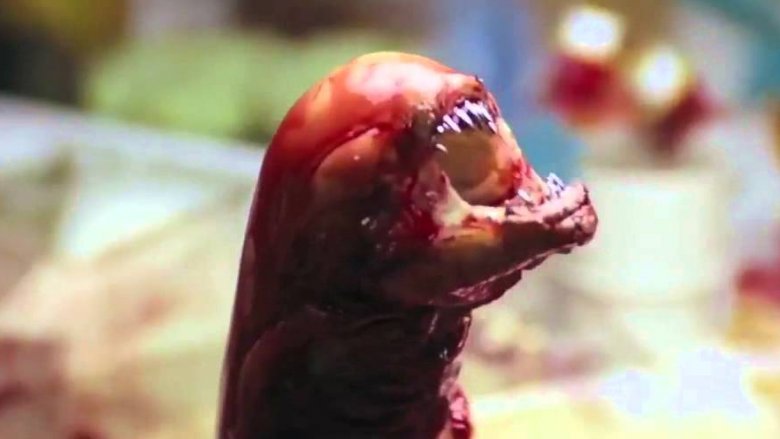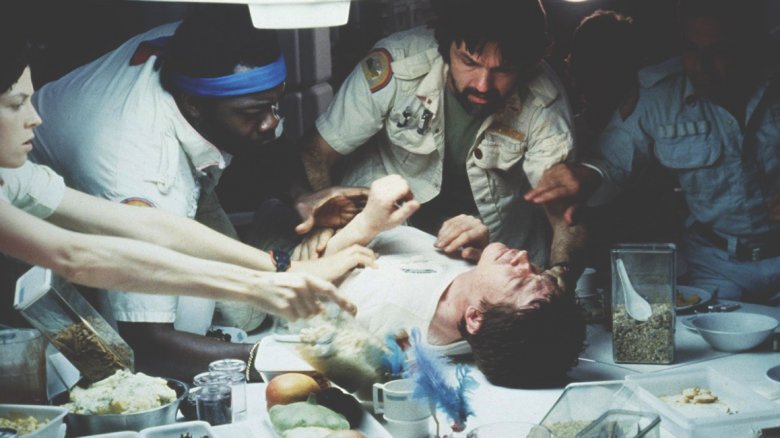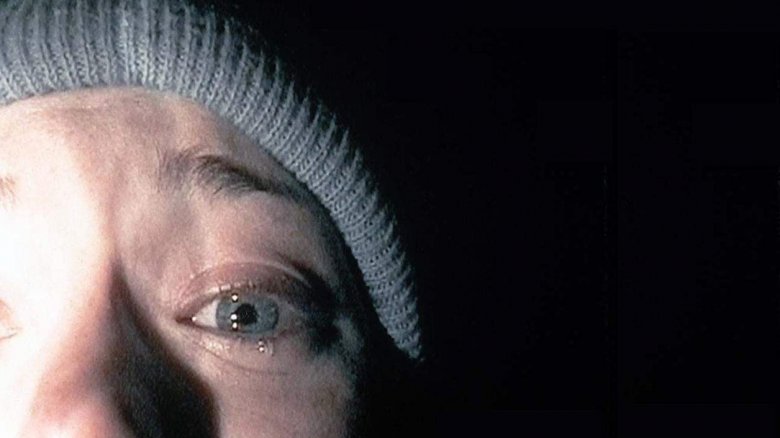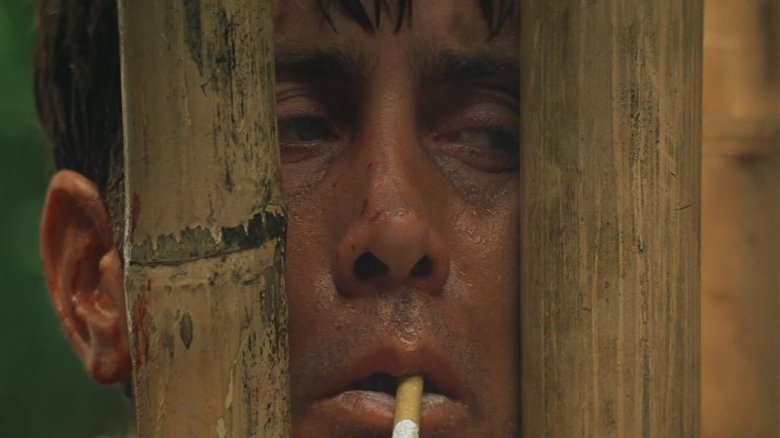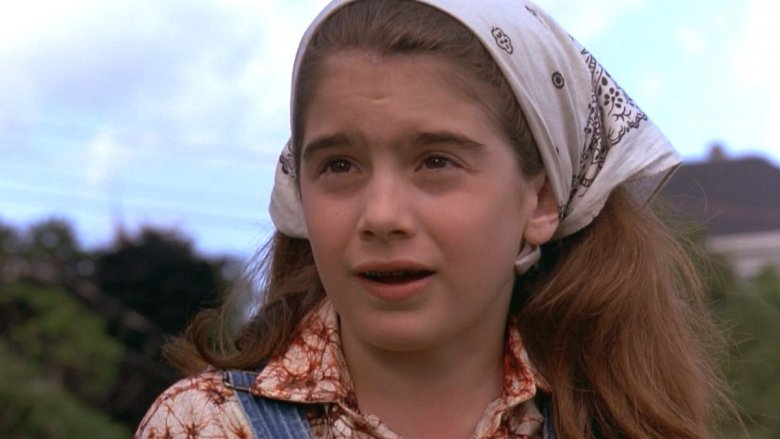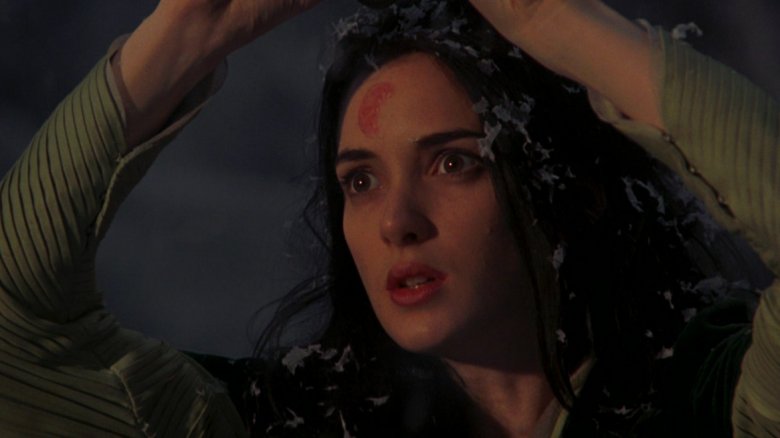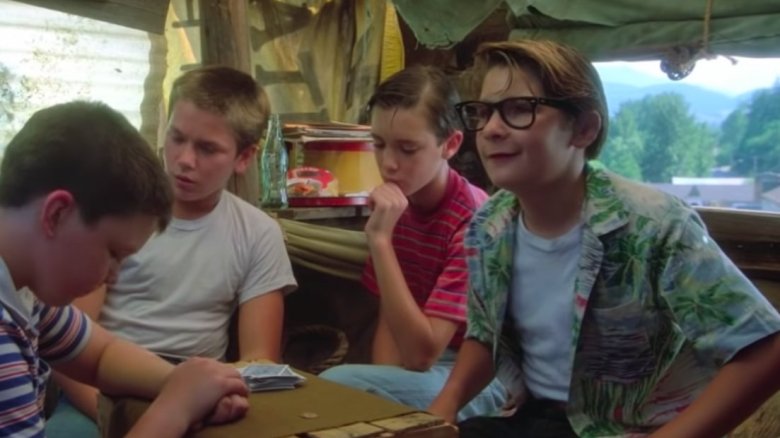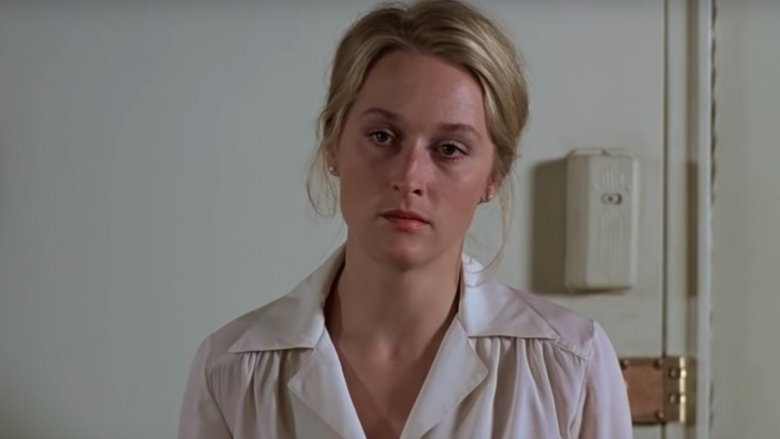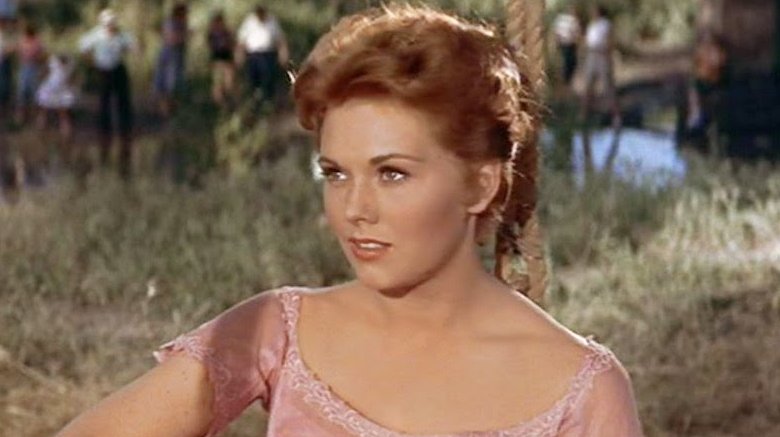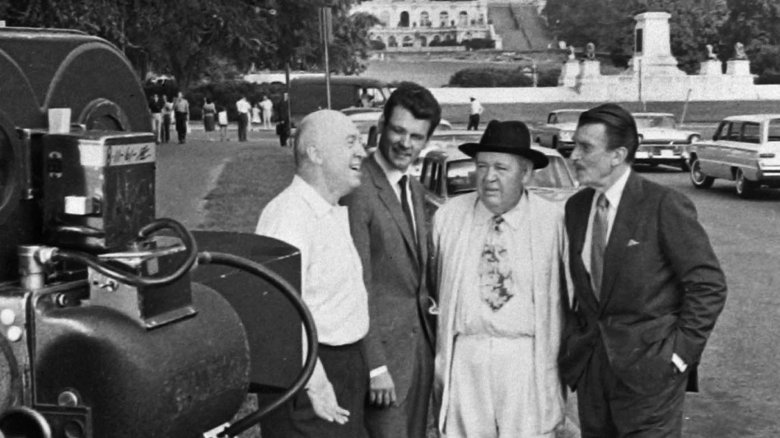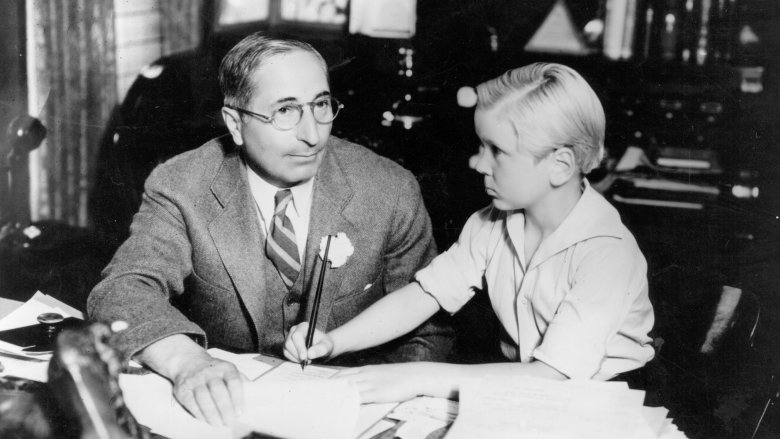Disturbing Ways Directors Have Gotten Actors To Cry
If you've ever tried to test your ability to cry on command, you know that actors shooting emotional scenes really have to push themselves in order to make their reactions look authentic. Most of us wouldn't be able to cry on cue in front of a director (unless you planned to sneak a few pieces of raw onion on set). It's not just about talent — actors also need to get into the right state of mind in order to make the tears flow. This can be a challenge even for experienced actors, and many of them have certain tricks that they use to make it look real.
But what happens when an actor just can't seem to cry when the script demands it? What's a frustrated director to do? Some will simply be patient, while others take it upon themselves to push their stars to their limits. How far are some of these directors willing to go in order to make an actor cry? Read on for a few examples of twisted techniques directors have resorted to to get that perfect take.
The chestbursting scene in Alien was a surprise
What made that unforgettable chestbursting scene in Alien so terrifying? Well, it turns out that it was just as much of a shock for the cast as it was for the audience — they had no idea what they were about to witness. Yup, those horrified reactions you see onscreen are completely authentic. The crew purposely kept it a secret from the cast. In fact, the script barely even hints at what's about to go down.
The actors have recalled feeling confused while the crew was setting up the shot. The crew members were wearing ponchos and protecting the cameras, but the actors had no other indication that the scene was about to turn into a total mess. When the "thing" burst out of Officer Kane's chest, actress Veronica Cartwright was hit with a stream of fake blood, and she ended up being so shaken by it that she ended up passing out. The entire cast was completely taken aback, and the end result was one of the most memorable and unexpected moments in the film.
The Blair Witch Project cast was lost in the woods
The Blair Witch Project firmly cemented the found footage film as an effective medium for surprising and scaring devoted horror fans. It was practically the start of a whole new genre, so clearly, directors Eduardo Sanchez and Daniel Myrick had to get innovative with their methods. What's the best way to shoot a found footage film so that it actually comes across as realistic? It's simple: just scare the actors out of their wits for real.
During the filming of The Blair Witch Project, the cast was sent into the woods with the bare bones of a script and a few cameras. They had to get most of the footage themselves, and they basically had to rough it in the wilderness for the entirety of the filming process. The directors even rationed their food and would play tricks on them at night to keep them from getting too comfortable. The tactics were cruel, but they worked — the characters' breakdowns were essentially real.
Martin Sheen really broke down in Apocalypse Now
Apocalypse Now is known for being one of the most hard-hitting portrayals of the Vietnam War. Although the story is fictional, the characters and dialogue feel so real that it can be hard to believe you're not watching some kind of disturbing documentary. How did director Francis Ford Coppola get such incredible performances out of his cast? By basically pushing them to their breaking points until there was nothing left for them to hold back — especially his star, Martin Sheen.
In the infamous hotel room scene, Coppola let Sheen drink as much as he wanted before filming — and it turned out to be more than he could handle. Coppola gave Sheen very few instructions for the scene and egged him on with insults until Sheen broke down and ended up punching a mirror. Coppola tried to intervene and said he was going to call a doctor, but Sheen refused to stop, later recalling, "I felt I wanted to wrestle this demon. It was planned, but unplanned."
Mel Gibson took out his anger on Gaby Hoffman
Mel Gibson isn't really known for his calm demeanor — he's been involved in some high-profile disputes, and as a result, he doesn't exactly have the friendliest reputation. While working as a director for the first time on his 1993 drama film The Man Without a Face, Gibson was tough on his cast and crew — even the children on set. Actress Gaby Hoffman, who played Megan Norstadt in the film, was only 11 years old at the time, but that didn't discourage Gibson from coming down hard on her when she failed to live up to his expectations.
When Gibson needed Hoffman to cry during a scene, he would scream and curse at her until she broke down. Hoffman knows now that she didn't have to take it personally — after all, he wasn't easy for anyone to work with, and since she was so young, she admits she acted out a bit on set — but it was a very difficult experience. That being said, she's made her peace with her former director: asked during a 2013 interview what she'd say if she saw him again, she responded, "I hope you're feeling better, Mel."
Francis Ford Coppola makes insults personal
Perhaps you can't become one of the best directors of all time without pushing your stars to the brink. That certainly seems to be the case for Francis Ford Coppola. While shooting his 1992 version of the classic story Dracula, Coppola couldn't get Winona Ryder to cry real tears. Frustrated, Coppola instructed Ryder's costar, Keanu Reeves, to insult her — and then Coppola started doing it too, berating Ryder until she finally started wailing. His star in tears, he insisted on doing eight takes of the scene until he was satisfied with the results.
After all those torturous takes, Ryder felt like she had been through the wringer — and once he knew he'd gotten the footage he needed, Coppola apologized and insisted he didn't mean the insults he'd screamed. Thankfully, that was the end of the shooting for that scene, and one of those intense takes made it into the final cut.
Rob Reiner made Wil Wheaton and Jerry O'Connell doubt their skills
The coming-of-age film Stand by Me was certainly a tearjerker at times for audiences, and as it turns out, things got pretty emotional on set for the cast, too. After all, the story of four friends searching for the missing body of a child is bound to build some serious tension — especially one based on a classic short story by horror master Stephen King.
There's no question that Wil Wheaton and Jerry O'Connell are talented actors, but director Rob Reiner wanted to see just how far they could take their performances. While filming a scene in which Wheaton and O'Connell are dodging a train on a trestle, Reiner was unsatisfied with every take. He began screaming at them and telling them they were bad actors who were doing a horrible job. After being berated, both boys started to cry, and Reiner finally got his perfect take.
Dustin Hoffman slapped Meryl Streep
When Meryl Streep was still relatively unknown in Hollywood, she signed on to play Joanna in the film Kramer vs. Kramer. It's hard to imagine a director being unsatisfied with Streep's performance, but Robert Benton had no real way of knowing what to expect from his young star. AS it turned out, he didn't have to take matters into his own hands in pursuit of the rawest possible performance — Streep's costar, Dustin Hoffman, did the work for him. On the second day of shooting, Hoffman shocked Streep by slapping her across the face before the cameras started rolling, leaving her hurt and roiled for an emotional scene.
After shooting wrapped that day, Benton was worried that Streep wouldn't come back, but against all odds, she remained committed to the film. Still, the emotional wound incurred during that scene remained — in a 2018 interview, Streep remarked, "I'm sure that I have inadvertently hurt people in physical scenes. But there's a certain amount of forgiveness in that. But this was my first movie, and it was my first take in my first movie, and he just slapped me. And you see it in the movie. It was overstepping."
Joshua Logan pinched Kim Novak
Plenty of directors are willing to verbally abuse their cast and crew until they finally get what they want out of them, but most of them don't cross the line into physical punishment. But Joshua Logan, who directed the 1956 film Picnic, didn't seem to think this was off limits.
Kim Novak, who had an early starring role in this film as Madge Owens, actually became frustrated with her own performance when she found that she was unable to cry convincingly during an important romantic scene. She asked Logan to pinch her arms until she cried. Logan obliged her request, and it worked — but it was thoroughly unpleasant for Novak, as it turned out that it would take more than a couple pinches to make her cry. She ended up with black and blue bruises up and down her arms, which the makeup department had to cover up to film the rest of the scene.
Otto Preminger frightened child actors
Director Otto Preminger didn't earn the fitting nickname "Otto the Terrible" for nothing. He was known for being especially harsh to his cast and crew on set, and everyone had to be ready to feel his wrath if they were going to sign on to one of his films. He had an intense personality that came through whether he was in front of the camera or behind it.
While shooting his 1960 film Exodus, Preminger took things to a new level. He needed to get a group of Israeli children to cry during a scene as their homes are attacked. When they failed to follow his instructions, he resorted to some of his unorthodox tactics: Yelling and calling them "little monsters" didn't work, so he took things a step further, directing one of his assistants to lead their mothers out of sight, then telling the children that they would never see their mothers again. After that, the waterworks were unsurprisingly in full force.
Norman Taurog threatened Jackie Cooper's dog
Jackie Cooper was a child star, and he quickly learned just how ruthless and intense Hollywood could be during the filming of one of his early movies, the 1931 comedy Skippy. Based on the comic strip of the same name, the film followed the adventures of a young boy named Skippy, played by Cooper, and his new friend Sooky, who lives in Shantytown. Cooper had a family connection on set: the film was actually directed by his uncle Norman Taurog. You might assume that because Cooper was his nephew, Taurog would go easy on him — but that wasn't how things played out.
In one scene, Cooper needed to muster up some tears over the death of Sooky's fictional dog. When Cooper struggled to cry while the cameras were rolling, Taurog resorted to a dirty trick, telling Cooper that he was going to shoot his own dog. Naturally, Cooper started sobbing; it wasn't until they finally finished filming the scene that Taurog revealed he was fibbing. The incident clearly had a lasting impact on Cooper, who later titled his memoir Please Don't Shoot My Dog.
